Snow is a precious gift to those of us who wonder what happens in prairies when we’re not around. You can learn a lot about animal activity just by walking across a snow-covered grassland. All it takes is a little observation and deduction.
I know there are gadgets like trail cameras that are also helpful, of course. If you combine savvy scouting and a deep understanding of animal behavior (or get really lucky), you might put a camera in the right place to capture a photo of a coyote, badger, or other animal walking by. Or you might not.
Unlike trail cameras, though, a good snowfall covers every inch of a prairie and provides a pretty full record of every (non-flying) animal that moves across its surface. Sure, you have to do some interpretation of tracks and other signs to figure out what happened, but that’s a lot of the fun! There’s not much mystery in looking at a photo of a coyote walking past a camera. “Hey,” you say, “there’s a coyote.”
Whoop-de-do.
Plus, where did the coyote go after it went past the camera? Good luck learning that important information from a little box strapped to a fence post. The snow will tell you, though. The snow knows all.

Over the weekend, I spent a very pleasant couple hours wandering our family prairie and reading stories of animal behavior told by the snow that fell late last week. For one thing, I learned there’s a fox hanging out at the prairie. That was the first time I’ve seen any sign of a fox at our prairie. We’ve always had a lot of badger activity, and coyotes and skunks are fairly common, but – for whatever reason – that was the first evidence of a fox that has ever caught my attention. Now, we’ve surely had foxes around, and it’s very possible that the fox who made those tracks has lived in our prairie for several years, but now I have proof. Hooray for snow!
The stars of this weekend’s snow stories, though, were mice. I’m not sophisticated enough to identify mouse species from their tracks, but whatever species are out there seem to have pretty good population numbers! Usually, I was able to follow the footprints back to a hole in the snow somewhere. And most of the time, the tracks leading out and back from that hole went in multiple directions. That made me wonder – was I seeing tracks of multiple mice coming out of the same nest? Or one mouse making multiple trips? And if it was the latter, I wonder how it decided which direction to go? See how much fun snow is? So many mysteries to ponder.

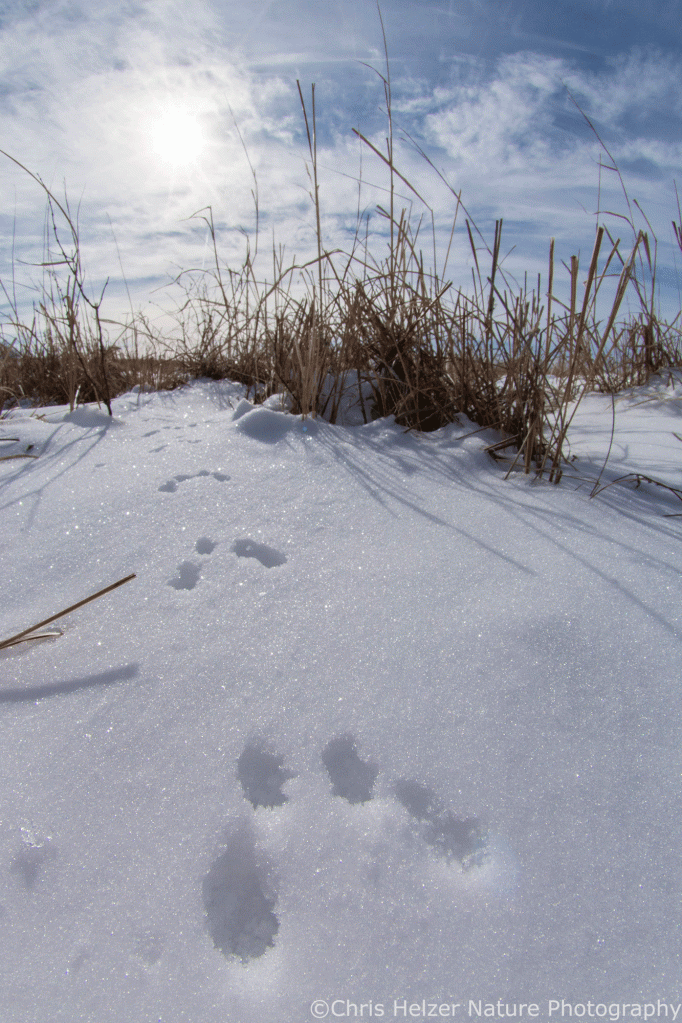
I didn’t find evidence of mice actively foraging on any particular plants. For example, I didn’t find any obvious examples of tracks leading to a plant stem or scattered bits of seed head on the snow that would indicate a mouse harvesting seed. However, I did find what looked like a food cache. It was 25 yards or so away from the boundary between our prairie and the neighbor’s soybean field. There were numerous tracks heading to the field and a hole in the snow with some soybeans piled in the bottom of it.
Was this an old cache the mouse had re-located and excavated to get to previously-stored seeds? Or was it taking advantage of good weather to make a new cache? Since there was snow covering the soybean field, I guessed it wasn’t actively searching for food there, but rather taking advantage of soybeans it had stashed earlier. I didn’t spend enough time following tracks back and forth to confirm my hypothesis – just being able to make a hypothesis was enough for me. I wished the little critter well and walked on.

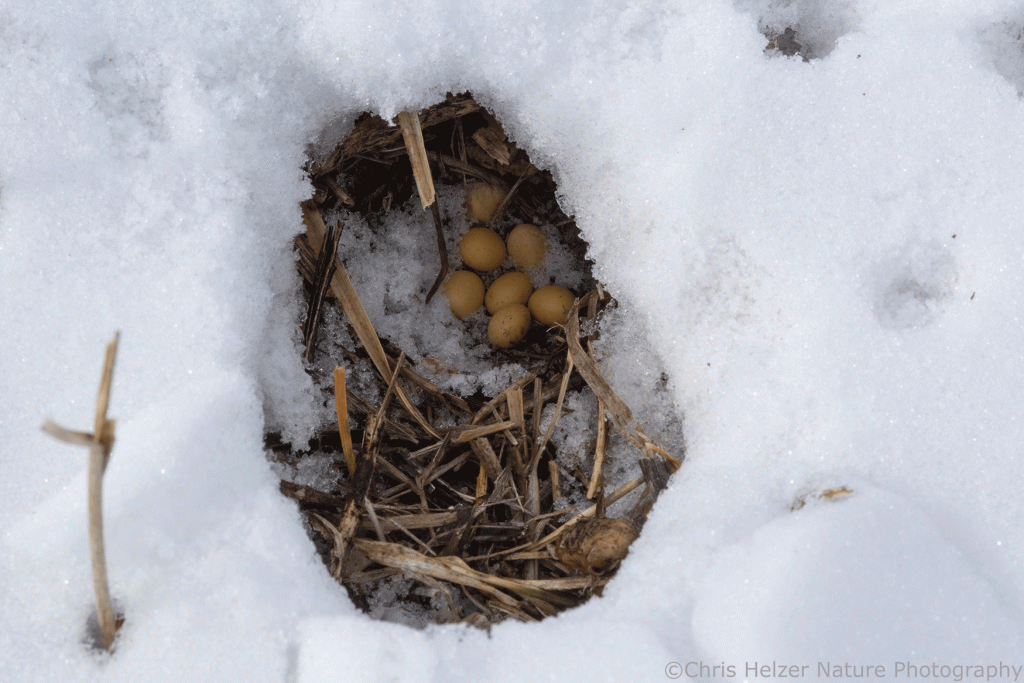
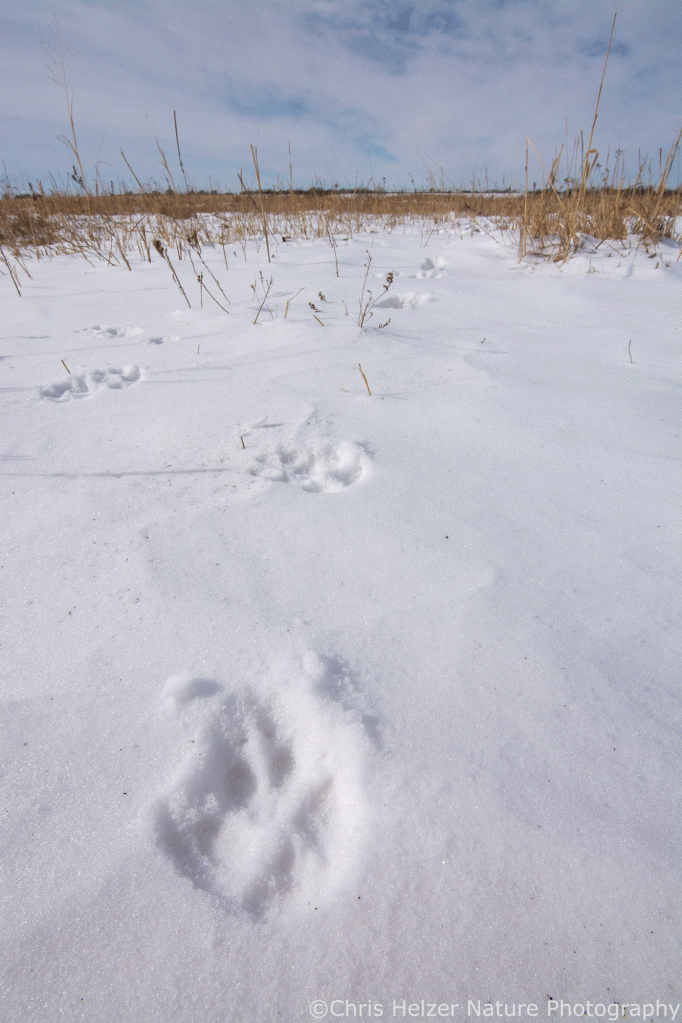
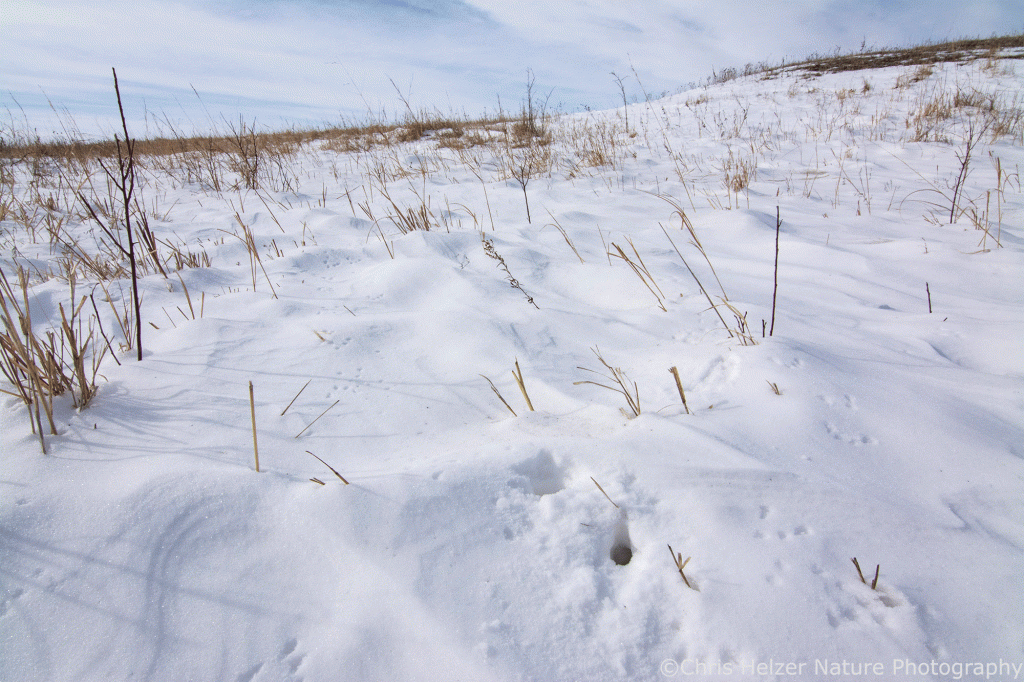
I saw both coyote and mouse tracks around, so I figured there must be some hunting happening, and eventually found evidence to confirm that. I’m not sure exactly what happened (see the next photo) but I’m guessing it turned out poorly for the mouse. When it comes to figuring out what mice are doing and where they’re doing it, I wonder if snow is as helpful to coyotes as it is to me? I didn’t ever see coyote tracks obviously following mouse tracks, which seems like a viable hunting strategy, but what do I know?

As entertaining as it was, I didn’t just follow mouse, fox and coyote tracks around all morning. As I walked, I spotted some sparrows, meadowlarks, and what I think was a flock of horned larks (they were a long way away). I also spent a little time reflecting on how last year’s grazing patterns affected the winter habitat and animal activity/signs I was seeing. Eventually, I grabbed my macro lens and settled into my winter comfort zone of photographing sideoats grama seed heads, ‘snow windows’ and other small wonders.

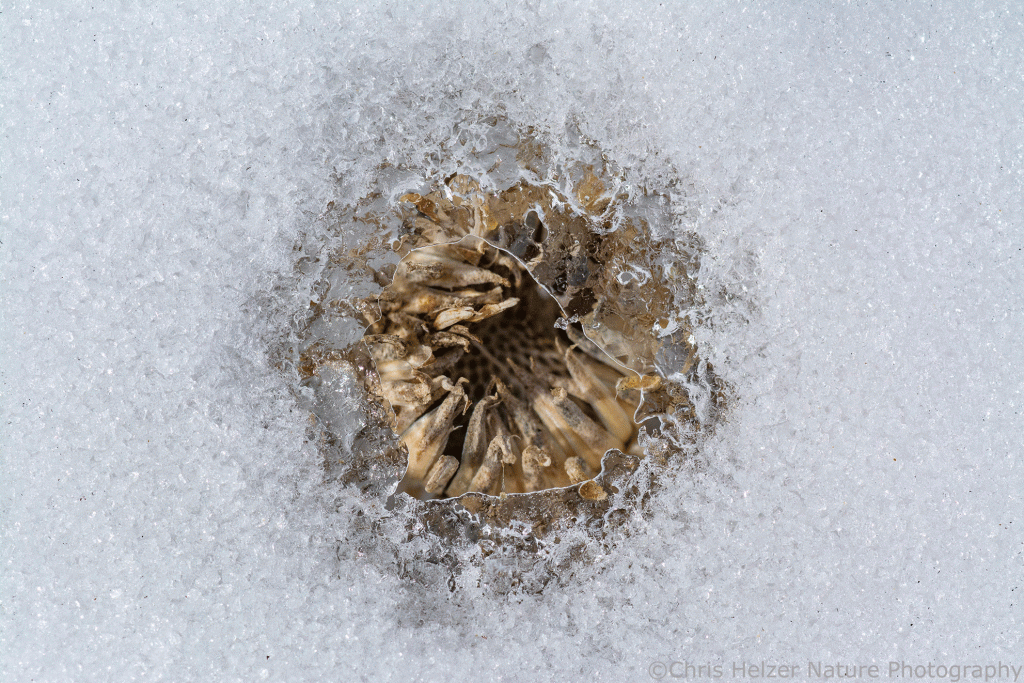
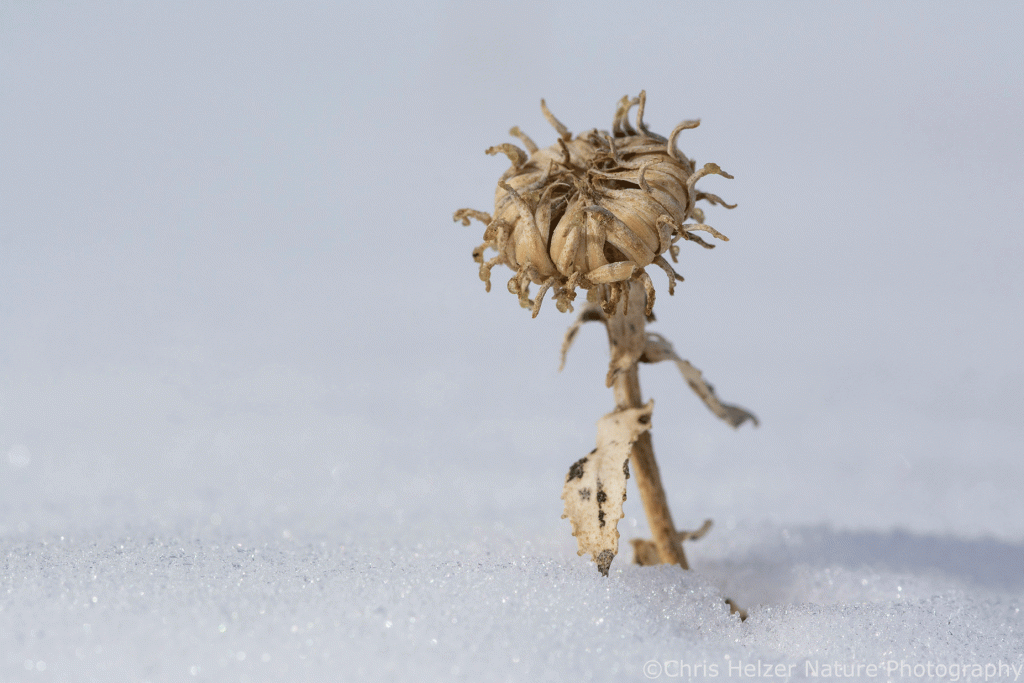

We haven’t had a whole lot of snow over the last few winters, and when it does snow, it doesn’t last very long. As I write this, most of last week’s snowfall has already melted, as per usual. Since we’re in a drought, the snow would be helpful, purely for its water content. But regardless of the moisture benefits, snow just makes winters more fun, especially if you’re like me and enjoy the stories told by a snow-covered prairie.

Chris, are you certain that those holes in the snow were created by mice? In my neck of the woods (southern Wisconsin), these types of snow holes in prairie habitats are probably more commonly created by voles. Voles abound in the subnivean zone in winter in Wisconsin prairies and rural lawns. Their tangle of prolific runways is revealed after snowmelt.
Hi Gary, I’m not SURE of anything. In this case, I’m fairly confident that the holes aren’t made by voles because I wouldn’t think voles would be running around on top of the snow and then going in and out of holes – they’d just stay in that subnivean zone, wouldn’t they? I’m guessing they’re most likely deer mice, but there are some other possibilities too.
Thank you for your story about snow.
RO
<
div dir=”ltr”>
<
blockquote type=”cite”>
Once I found an owl’s wing prints at the end of a mouse’s trackway. I’d never have seen that without snow.